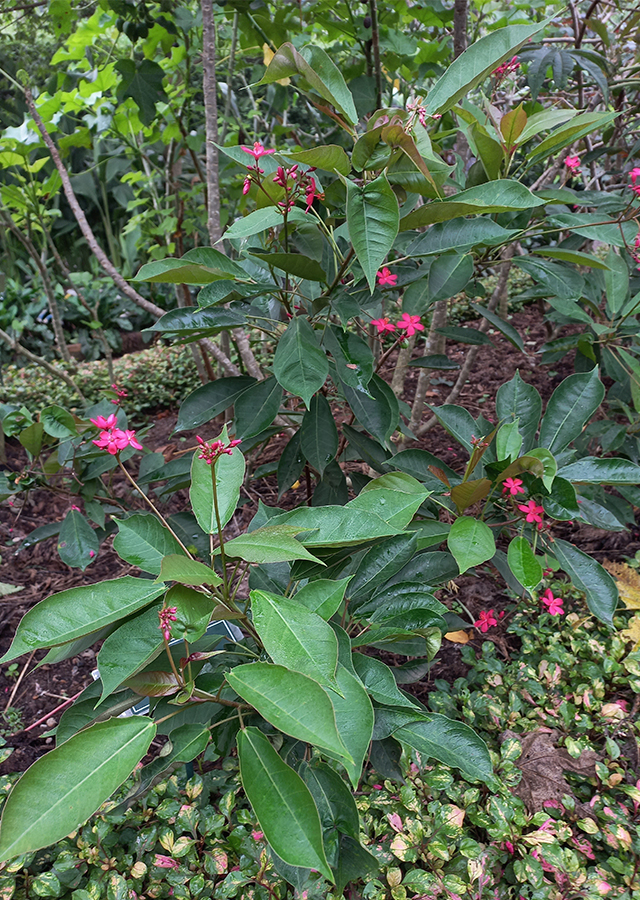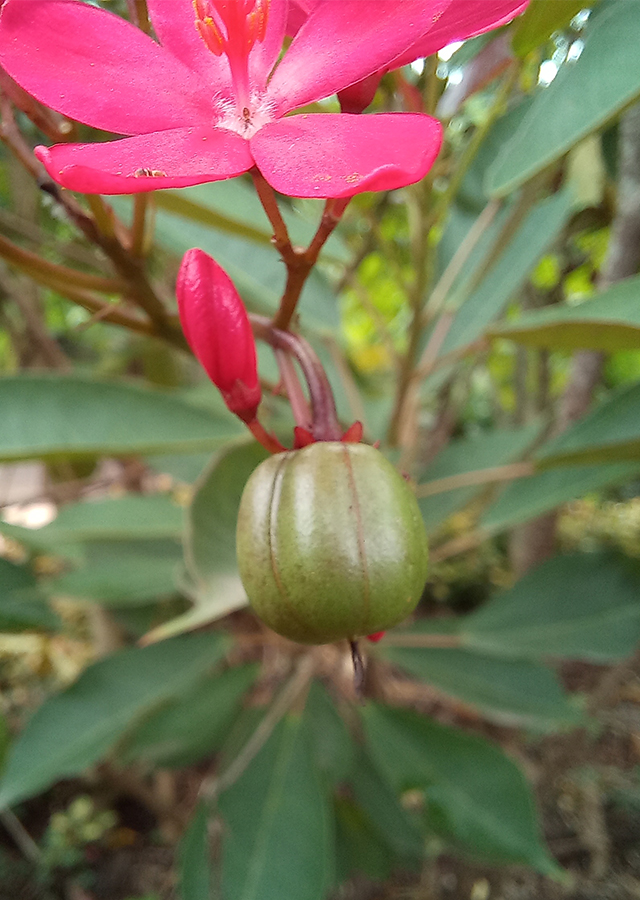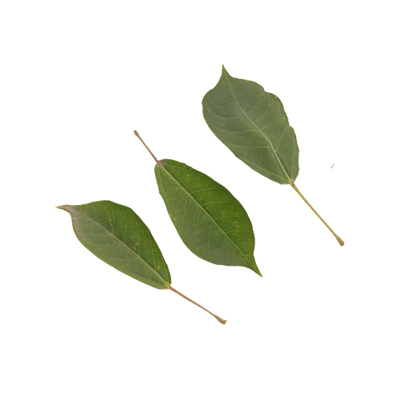Peregrina
Jatropha integerrima Jacq.
Euphorbiaceae
Location in our garden
Principal



Synonym
Adenoropium hastatum (Jacq.) Britton & P.Wilson
Adenoropium integerrimum (Jacq.) Pohl
Adenoropium pandurifolium (Andrews) Pohl
Habitus
Shrubs. A medium-sized branching shrub, growing up to 3 m high.
Part Used
Leaves
Growing Requirements
Full Sunshine
Need Shade
Habitat
Forest
Roadside
Terrestrial
Overview
Jatropha integerrima is native to Cuba, which has been introduced into tropical and subtropical areas worldwide as an ornamental species. Secretes milky sap when cut, sap may cause skin irritation. All parts of plant are poisonous when ingested due to phytotoxin - curcin.
Vernacular Names
Belladona (Cuban), Pattawia (Thai), Dầu lai lá đơn (Vietnamese), Qin ye ying (Chinese), Yatorofa integerima (Japanese), Epicar (French), Korallenbaum (German), Alelí (Spanish), Blomsterjatrofa (Swedish), Latrofa tsel´nokrainiaia (Russian)
Agroecology
Peregrina grows best in partial shade to full sun, in semiarid areas of the tropics and subtropics. This plant is drought and heat tolerant, but not adapted to saline environments, tolerates temperatures of -4 °C, can grow in a variety of well-drained soils, in a pH range from alkaline to acidic. The average annual rainfall is 475 - 2.500 mm/year. The plant is found near swamps, on disturbed soils, limestone cliffs and humus pockets in forests, and is cultivated in urban areas.
Morphology
- Stems - Erect, dark brown, striate, much-branched, woody, glabrous; short shoots absent; latex watery, colourless in younger shoots, cloudy-whitish in older branches.
- Leaves - Green, oblong to obovate in shape and sometimes three-lobed, simple and alternate arrangement, measuring about 10 - 20 cm long.
- Flowers - Separate male and female flowers on the same plant, red in colour and measuring about 2.5 cm across, usually in clusters.
- Fruits- Oval-shaped fruit, measuring about 1 - 2 cm long, green in colour, seeds measuring about 0.9 - 1 cm long.
- Seeds - Cream, mottled with red and black spots, ellipsoidal, 7–10 × 4–6.5 mm; caruncle relatively small, conspicuous.
Cultivation
Propagated by seeds and stem cuttings.
Chemical Constituents
Tannins, saponins, steroids, triterpenes, flavonoids.
Traditional Medicinal Uses
- Studies have shown antimicrobial, cytotoxic, antioxidant, antiproliferative properties.
- The plants is used in the treatment of warts, tumors, rheumatism, herpes, pruritus, toothaches, scabies, eczema and ringworm.
Part Used
Reference Sources
- Cabi. Jatropha integerrima. https://www.cabi.org/isc/datasheet/28395. 19-10-21.
- StuartXchange. Philippines Medicinal Plant. (2020). Jatropha integerrima. http://www.stuartxchange.org/ShanghaiBeauty. 19-10-21.
- National Parks. Flora & Fauna Web. (2019). Jatropha integerrima. https://www.nparks.gov.sg/florafaunaweb/flora/2/1/2152. 19-10-21.

